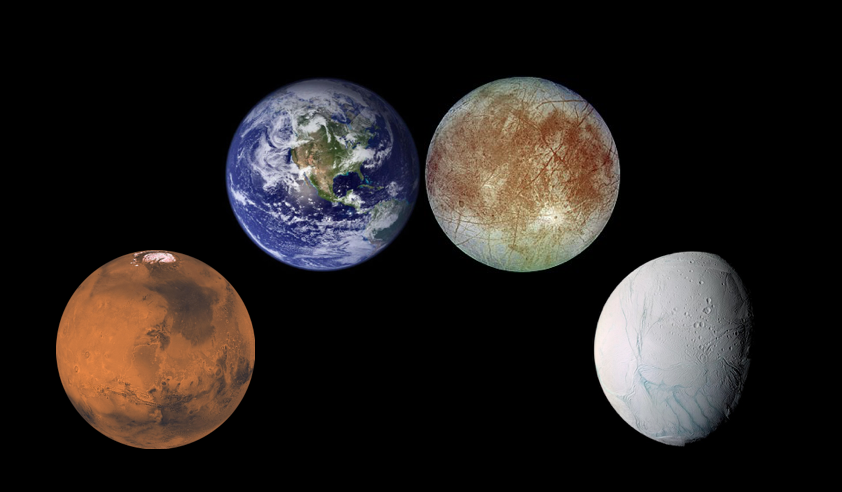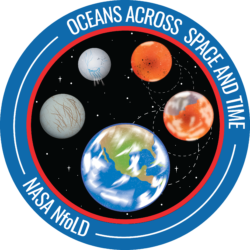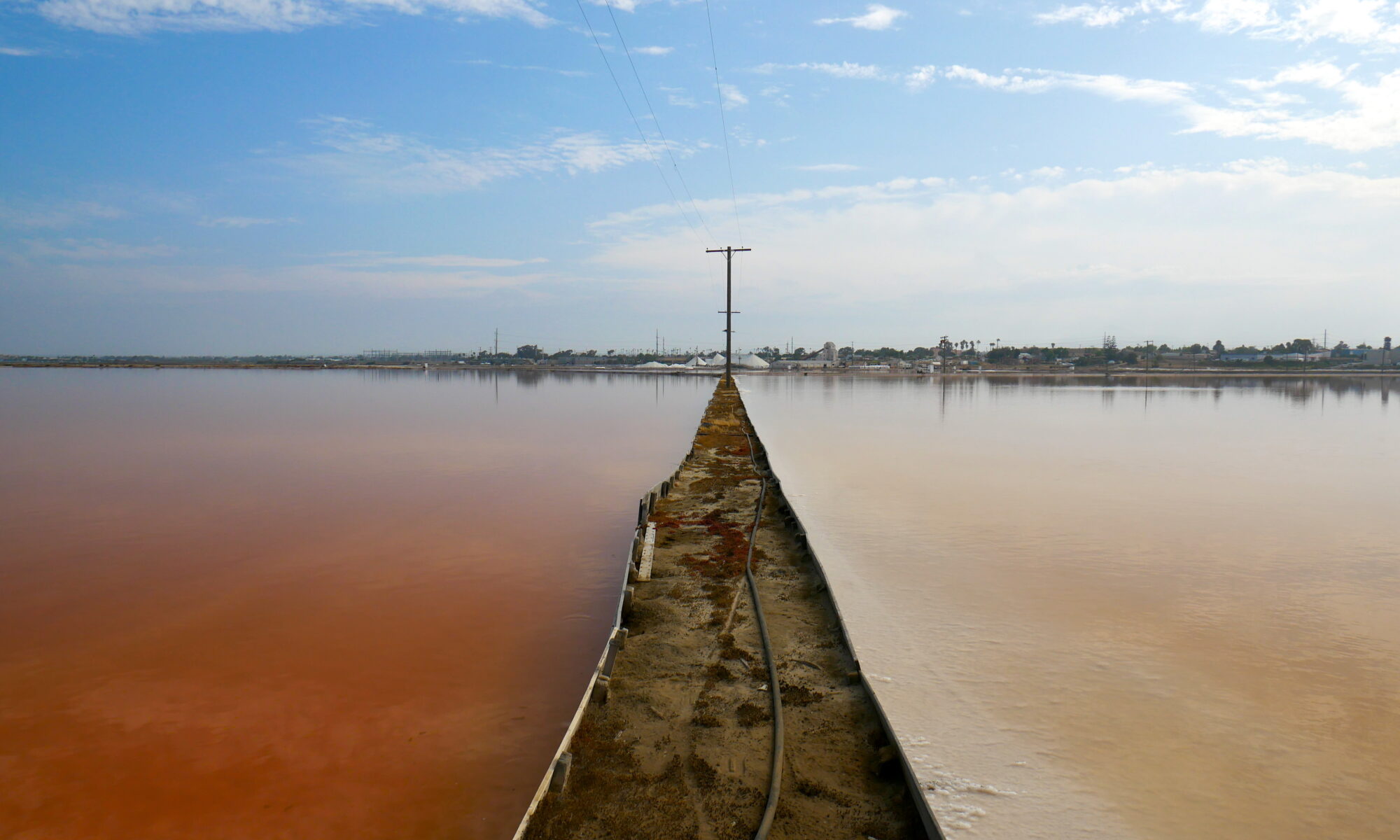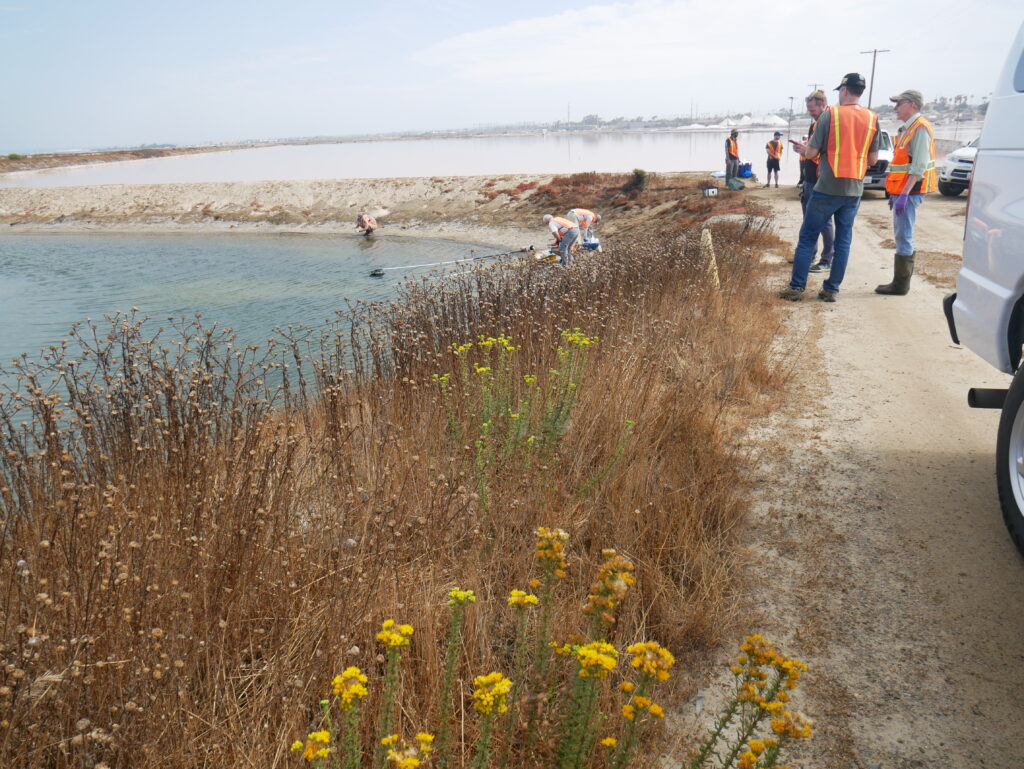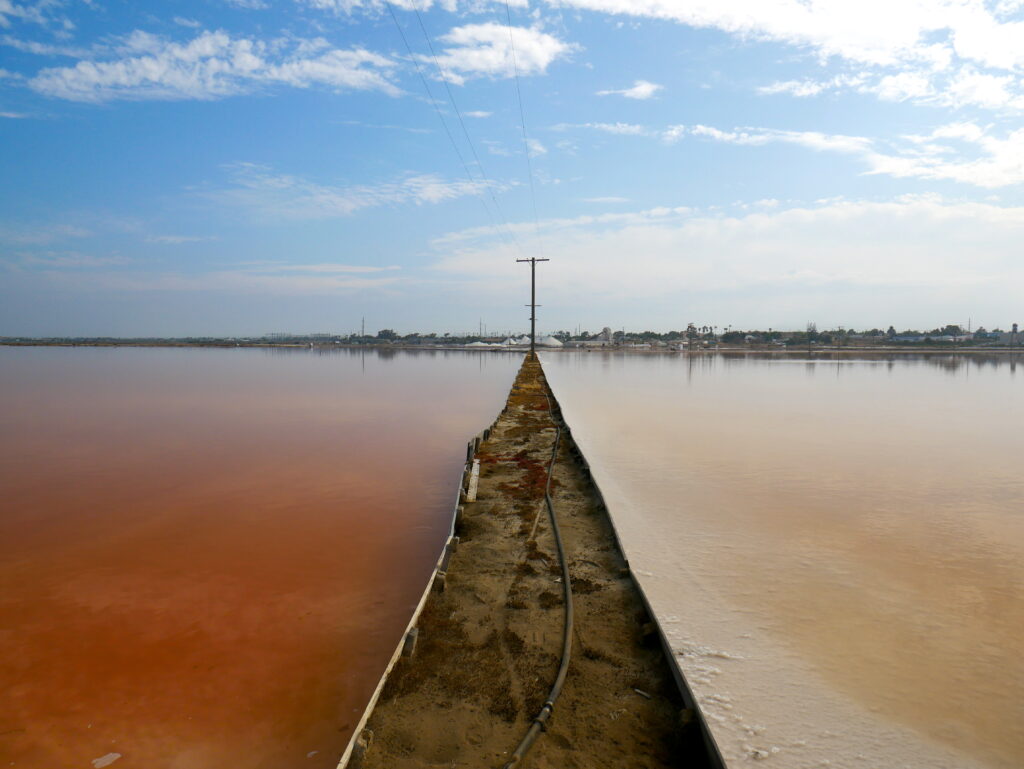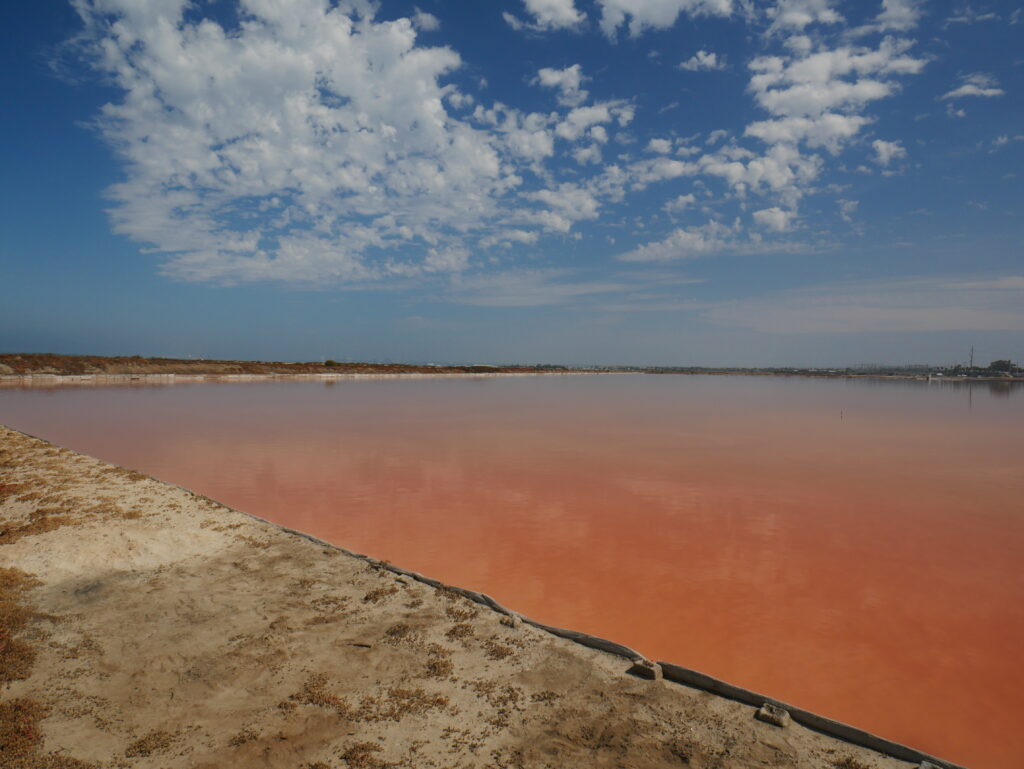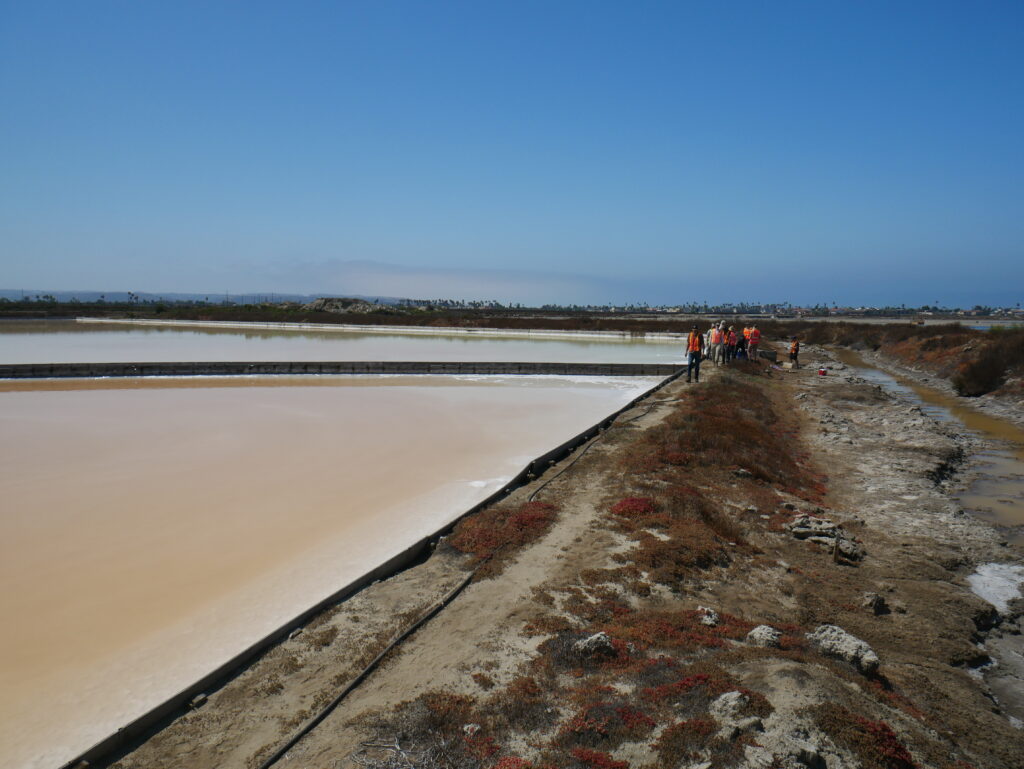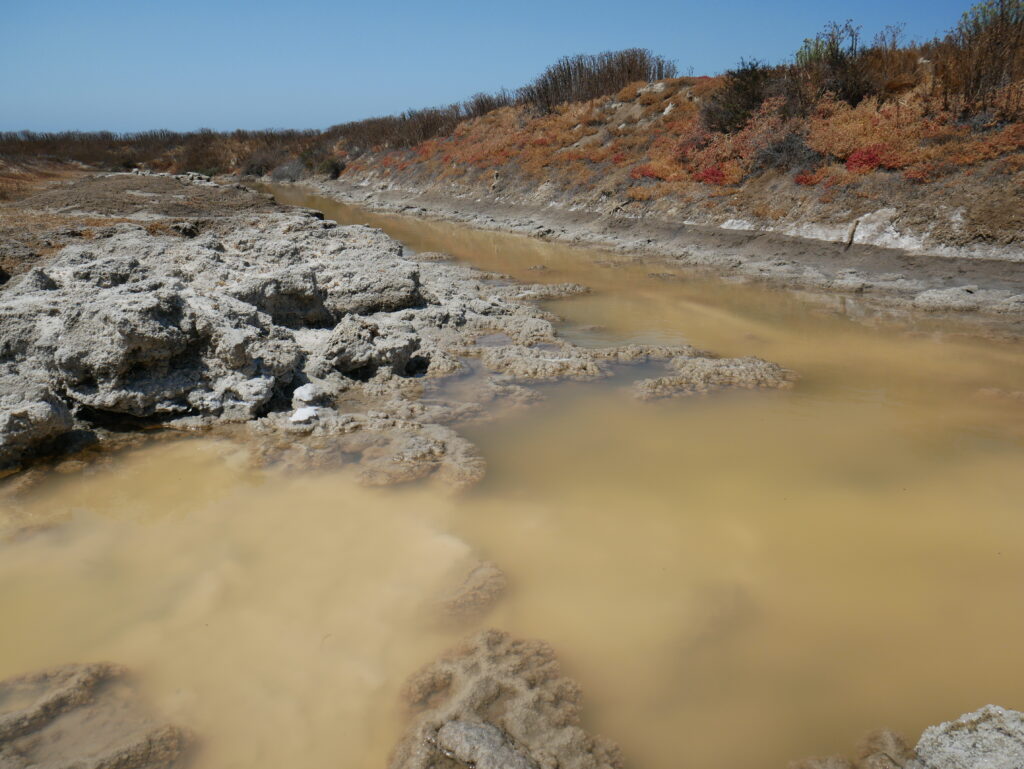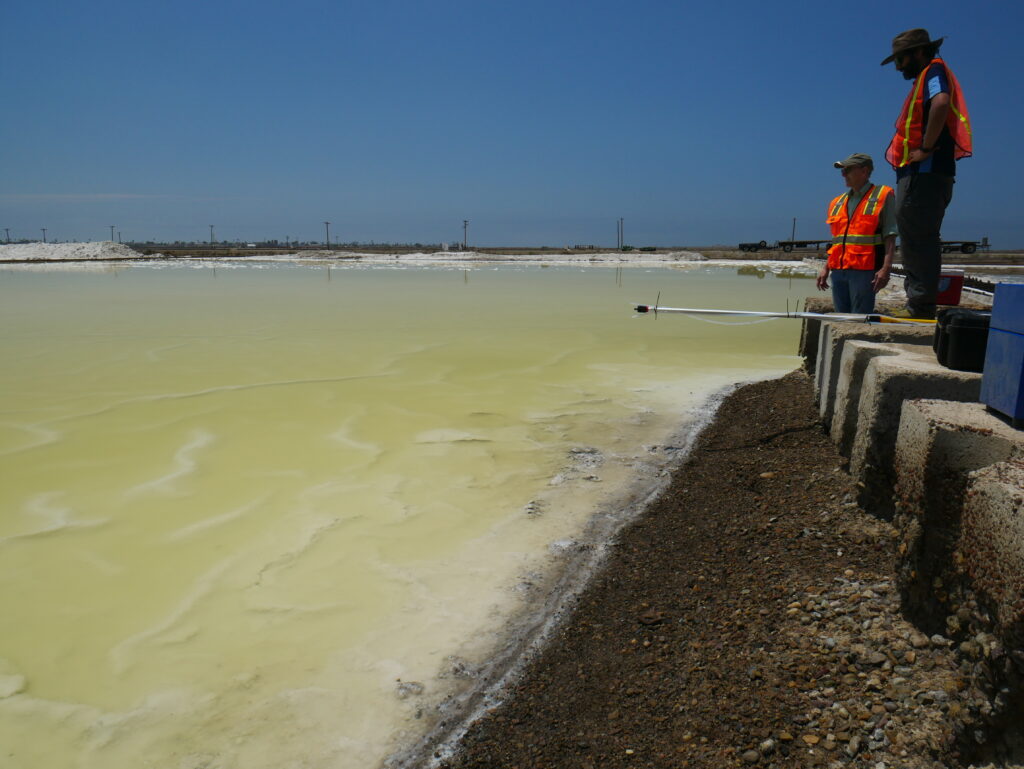The August 2019 team meeting in San Diego, CA was a great success, with collaboration, planning, and field work the focus of an extremely successful week. Scientists, engineers, and other OAST (Oceans Across Space and Time) team members met for productive meetings and planning sessions, before heading out for field work in two different locations: South Bay Salt Works in Chula Vista, and the ocean off the coast of San Diego near Scripps Institute of Oceanography.
Life detection methods took center stage at SBSW, while another small team took the Icefin robot out into the ocean for test runs. Icefin, a robot oceanographer designed and operated by several team members, is technology used both OAST as well as several other projects, including MELT and RISE UP.

Over at the salt works, a group of 16 OAST members collected samples of the salts, water, and sediment, in several salt ponds, in order to study how microbial ecosystems are organized across gradients of environmental stress, with the goal of aiding life detection methods on other worlds, such as Mars and Europa.
Several days at the salt works yielded exciting samples for the team to analyze and study over the upcoming year. The salt ponds ranged from approximately the salinity of the ocean, all the way up to the point where certain salts reach saturation and start to precipitate out, resulting in colors that vary from blue, to white, to pink, to yellow and green.
Some ponds – whose salinities similar to ocean water – are dominated by sodium chloride. When that sodium chloride precipitates out, it leaves other salts like magnesium chloride, which interacts with the ecosystem, and life, in a very different way than the sodium chloride in Earth’s oceans.
The intensive pink color of the sodium chloride ponds reflects the density of life in those environments. By contrast the green coloration of the magnesium chloride ponds is caused by highly toxic minerals. Trying to demonstrate the presence or absence of life in these ponds is very similar to the challenge of life detection on other planets.
“These ponds will break any instrument that you put in them” said Jeff Bowman, a biological oceanographer at Scripps Institution of Oceanography and OAST deputy PI. “But that’s what makes them such a good model. If we can make an assay or experiment work here, we can make it work anywhere.”
In addition to identifying the different salts present in each of the ponds they sampled, team members are also working to identify the specialized life that can survive in sodium chloride, and determine if life can even survive in high concentrations of magnesium chloride at all.
Because of the range of salinities and conditions from pond to pond, some where we know life can exist, and others where we’re unsure, South Bay Salt Works is a great place to test life detection strategies for places like Mars and Europa.
